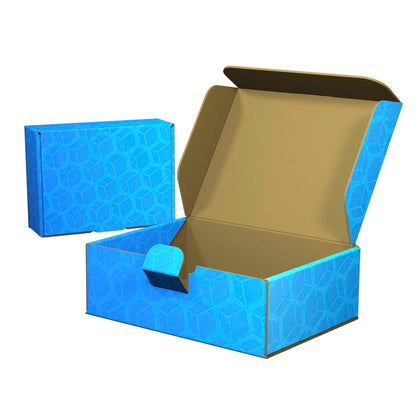Can your digital press do spot colors?
No, it cannot. The Barberan Jetmaster 1680 is an Extended Gamut CMYK process printer. This particular machine uses 6 different inks, cyan, magenta, yellow, black, orange, and violet (CMYKOV). We are able to effectively achieve approximately 85% of pantone spot colors (substrate dependent, ex. mottled white, bleach, etc).
How do you determine how my project will be printed?
There are multiple factors to consider when deciding on the best method of production: • Project/Package type (ie high-end display, or basic RSC kraft package, etc.?) • Number of graphic and/or component versions. • Quantity of prints (for each graphic and/or component version. • Number of colors (C,M,Y,K, +PMS Color(s)?) • Size of component(s) • Other details (ie. Brand, product, retailer, indoor/outdoor, method of seal (glue, tape, shrink, etc.)
What does "End Loading" mean?
End loading, or end opening, is used to indicate a container that is filled from the side by sliding the contents into the box.
What does "Flute" mean?
The “Flute” of a corrugated board is the wave shaped paper in the middle of the board. This is what gives the board its thickness and strength. ###/bb###. Multiple flutes can be used to create doublewall board such as B/C, B/B, or E/B.
What does Flexography mean?
Flexography (often abbreviated as flexo) is a rotary printing process which utilizes a flexible print plate to transfer ink to a variety of different substrates.
What file size are best for printing images?
We recommend all images have a minimum resolution of 150ppi, but prefer 300ppi for optimal print quality. When an image falls below the 150ppi minimum, it runs the risk of appearing jagged or pixelated when printed.
What file type / format should I provide for my print job?
Regardless of production method it is the same. For best results and maximum quality, Bennett recommends that customers provide layered native files, preferably Illustrator .ai or .eps, with packaged or outlined fonts, and packaged or embedded links with rasterized elements at 300ppi (minimum of 150ppi). Provided graphics should also include final die lines and sheet/trim size. Bennett also accepts illustrator compatible PDFs.
What is a Pallet Skirt?
Pallet skirts, sometimes referred to as pallet wraps, are commonly used in the club store arena. They are designed and manufactured to wrap around the bottom portion of a pallet display and covers up the pallet itself. Best examples of pallet skirts are those that market the retail brand and product to the shoppers by incorporating high-quality graphics and relevant messaging.
What is a PDQ Tray?
A PDQ tray is a point-of-sale display that is placed directly on a retail shelf or rack. Also referred to as a Counter Display. The trays usually are include specific brand/product messaging via litho-labels, flexo printing or digital printing.
What is an RRP or SRP?
Retail Ready Packaging, sometimes called SRP or Shelf Ready Packaging is packaging that is manufactured to ship product, and then be placed directly on retail shelves upon delivery, without unpacking or repacking the product into a separate display.
What is an RSC Style box?
RSC, or Regular Slotted Container, is the most common style of box. All flaps are the same depth, and the two outer flaps are one-half the container’s width and meet when folded. This box can be used for most products and, unless very small, does not require cutting die tooling.
What is CMYK printing?
CMYK refers to the four inks used in some color printing: cyan, magenta, yellow and key (black). Though it varies by print house, press operator, press manufacturer, and press run, ink is typically applied in the order of the abbreviation.
What is Extended Color Gamut printing?
Printing in an extended or expanded gamut means that packaging is not printed in a combination of CMYK and spot inks. Typically the press will be standardized on CMYK + 2 or 3 extra inks (e.g. orange/green/blue). By adding extra colors to the traditional CMYK range, printers can achieve a larger color spectrum.
What is Shrink Film?
Shrink film is made of polyolefin resin and comes in different gauges that effect the level of protection and clarity of the film. The film works by first creating a “bag shape” around a product and then, by applying heat, the film “shrinks” around the product and tightens up to protect or bundle products.
What is Stretch Wrap?
Stretch wrap is made from polyethylene material and is used to tightly hold/squeeze product together on a pallet for shipping purposes. When applied, the wrap, like a rubber band, is stretched and wrapped around the product. The wrap provides a tightening or squeezing effect which gives the holding force to the pallet.
What is the best file type for sending die-lines?
Die-lines can be sent to us in quite a few different file types including: .ard, .dxf, .dwg, .eps, .pdf, and .ai. If you have a different file type not listed, there is a good chance we will still be able to work with it. When sending .pdf’s make sure the die-lines are vector elements and not rasterized. It is also good practice to include a few dimensions in the file, this will help us to insure the export / import process did accidently scale the die-lines.
What is the best way to communicate the dimensions of a box?
For a standard box (RSC, HSC, etc…) the most common and best way to call out the size of it would be L x W x D. Where “L” is the length and the longest side, “W” is the width and the short side, and “D” is the depth of the box. The given dimensions should be the inside dimensions or ID of the box. Rarely will boxes be measured by the OD or outside dimensions of the box. Things do tend to get a bit more complicated when calling out sizes of PDQ trays and other display type designs. Here, OD’s can become more important as retailors can dictate maximum shelf and footprint sizes of designs. When the final product will be placed on retail shelves, dimensions are often called out by W x H x D. “W” width, is the length along the shelf, “H” is the height of the design, and “D” is the depth of the design from the edge of a shelf to the back wall. In all cases, a simple and crude sketch will always be helpful in communicating the dimensions.
What is the difference between cardboard and corrugated?
Corrugated material is composed of three layers of paper—an inside liner, an outside liner and the fluting that is placed between the liners. Cardboard is simply a heavy paper stock called paperboard. It is commonly used for packaging cereal and other food products, for example.
What is the maximum printable area for the Barberán Jetmaster?
There is no maximum printable area, but we typically print 67”x120”.
What is the minimum font size for the Barberán Jetmaster?
All fonts are different, making it difficult to determine a minimum size, but Bennett recommends that all positive printed type (black type on a light background) be pure black in color, and no smaller than 6pt font or .005” stroke thickness, and that all reversed type (white type on a dark background) be no smaller than 9pt font or .018” stroke thickness.
What prepress (file setup) guidelines should I follow when setting up my print files?
Every production method comes with a different set of requirements, but here are some general rules to follow: • Color Mode: CMYK. • Special Colors: Assign PMS colors when desired, but avoid color altering effects with spot colors when possible (transparency effects, drop shadows, etc..) • Bleed: .375” outside, .25” inside. • Resolution: 300ppi recommended, 150ppi minimum. • File Size: Not to exceed 1.5GB • File Format: Adobe Illustrator .ai, .eps, or Illustrator compatible PDF.
What's the difference between Mullen and ECT board grades?
Mullen boards are graded by burst strength, or the force required to rupture the corrugated fiberboard, which is related indirectly to a box’s ability to withstand external or internal forces. ECT grades represent the amount of force needed to cause compressive failure and predicts the compression strength of the box.
Why is recycling important to the corrugated industry?
Recycling corrugated helps decrease solid waste disposal in landfills. It also provides fiber that is reused to make new corrugated, so we can use less new, raw material.
Will my production parts look and feel just like my samples?
Yes and no. It is our goal to provide samples that will best reflect your final produced parts, however it is not always possible to replicate production quality from our sample tables. Scores will typically be crisper and cleaner off a die cutter than they will be when done on our sample tables. In general, production parts tend to fold-up better when compared to prototypes. If your design has tabs and slots, you may be concerned that they are too tight, however when our designers produce the CAD drawings they have to take into consideration the board will be crushed 1/64th to 1/32nd of an inch production. This "machine crush" and oftentimes, the print, (digital and litho) will make your tabs and slots work as intended. For other concerns, please read the disclaimer on our sample sticker labels and talk with your Sales Person for further information.
Latest Posts




